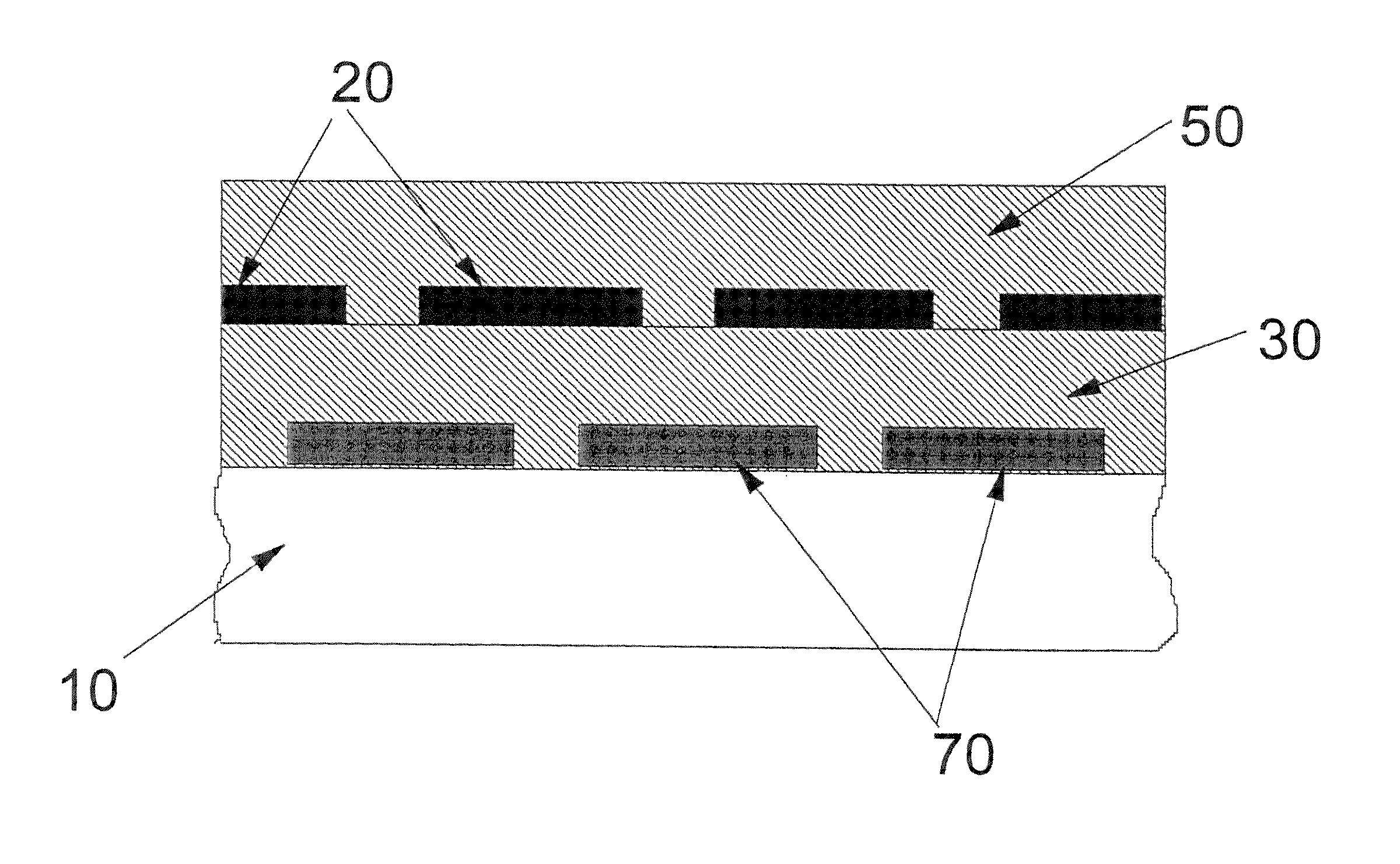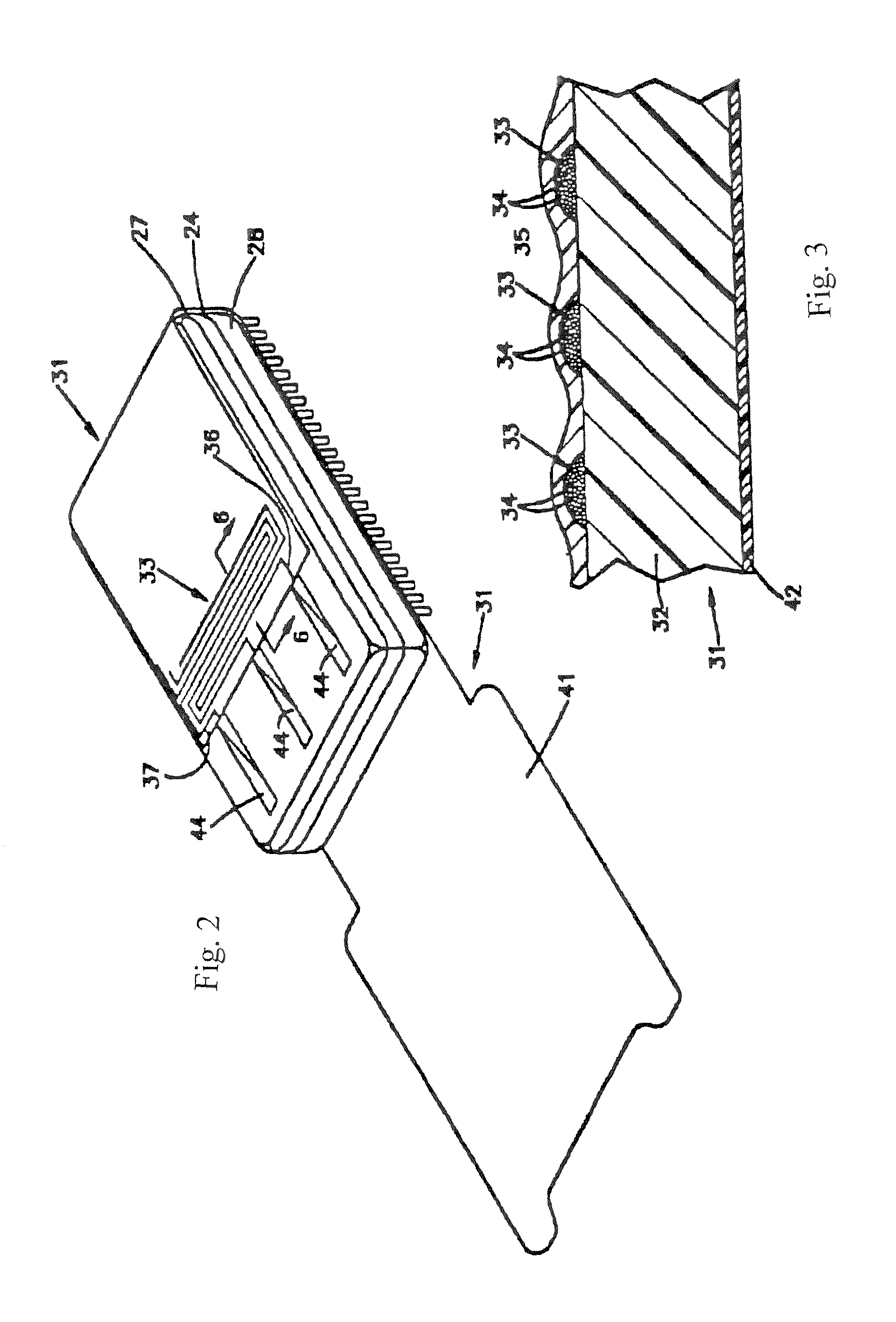Data protection by detection of intrusion into electronic assemblies
a data protection and electronic assembly technology, applied in the field of patterned electrically conducting polymers, can solve the problems of ineffective structure against more sophisticated structures, the inability to reduce the line width and spacing of the conductor pattern to a more desirable range of 0.05 to 0.075 mm, etc., and achieve the effect of hard defea
- Summary
- Abstract
- Description
- Claims
- Application Information
AI Technical Summary
Benefits of technology
Problems solved by technology
Method used
Image
Examples
example 1
[0054]Polyaniline doped with acrylamidopropanesulfonic acid described in U.S. application Ser. No. 08 / 595,853 filed on Feb. 2, 1996, the teaching of which is incorporated herein by reference was spin applied on to a 1 mil thick, Kapton H film (a trademark of E.I. DuPont Co.) from a suitable solution including N-methylpyrrolidinone, m-cresol, dimethylpropylene urea, dimethylsulfodimethylformamide, etc. The surface of the Kapton film was first subjected to 8 minutes oxygen reactive ion etch treatment in order to achieve better adhesion of the polyaniline to the film substrate. The thickness of the coating can be controlled by the concentration of the polymer in solution as well as the spin speed. Generally a 5% solution was utilized of the polymer in a given solvent. The thickness of the coating ranged from 1800-2000 Angstroms. The conductivity of the film ranged from 1 to 150 S / cm. The coated film was baked in an oven at 85 C for 5 minutes to remove residual solvent. On to this polya...
example 2
[0055]Poly(3-butylthiophene-2,5-diyl) was dissolved in a suitable solvent such as tetrahydrofuran, methyl ethyl ketone, N-methyl pyrrolidinone, etc and spin coated on a glass plate. The polythiophene was then doped by exposing the film to a chamber of iodine. The doped sample was then pumped under dynamic vacuum. A conductivity of 1000 to 2000 S / cm was attained. This film was patterned by applying the Shipley photoresist S-1808 as described above for the polyaniline.
example 3
[0056]Poly(3-hexylthiophene-2,5 diyl) was also dissolved, coated and doped in the manner stated above and patterned as described in Example 1.
PUM
| Property | Measurement | Unit |
|---|---|---|
| thick | aaaaa | aaaaa |
| thick | aaaaa | aaaaa |
| thick | aaaaa | aaaaa |
Abstract
Description
Claims
Application Information
 Login to View More
Login to View More - R&D
- Intellectual Property
- Life Sciences
- Materials
- Tech Scout
- Unparalleled Data Quality
- Higher Quality Content
- 60% Fewer Hallucinations
Browse by: Latest US Patents, China's latest patents, Technical Efficacy Thesaurus, Application Domain, Technology Topic, Popular Technical Reports.
© 2025 PatSnap. All rights reserved.Legal|Privacy policy|Modern Slavery Act Transparency Statement|Sitemap|About US| Contact US: help@patsnap.com



